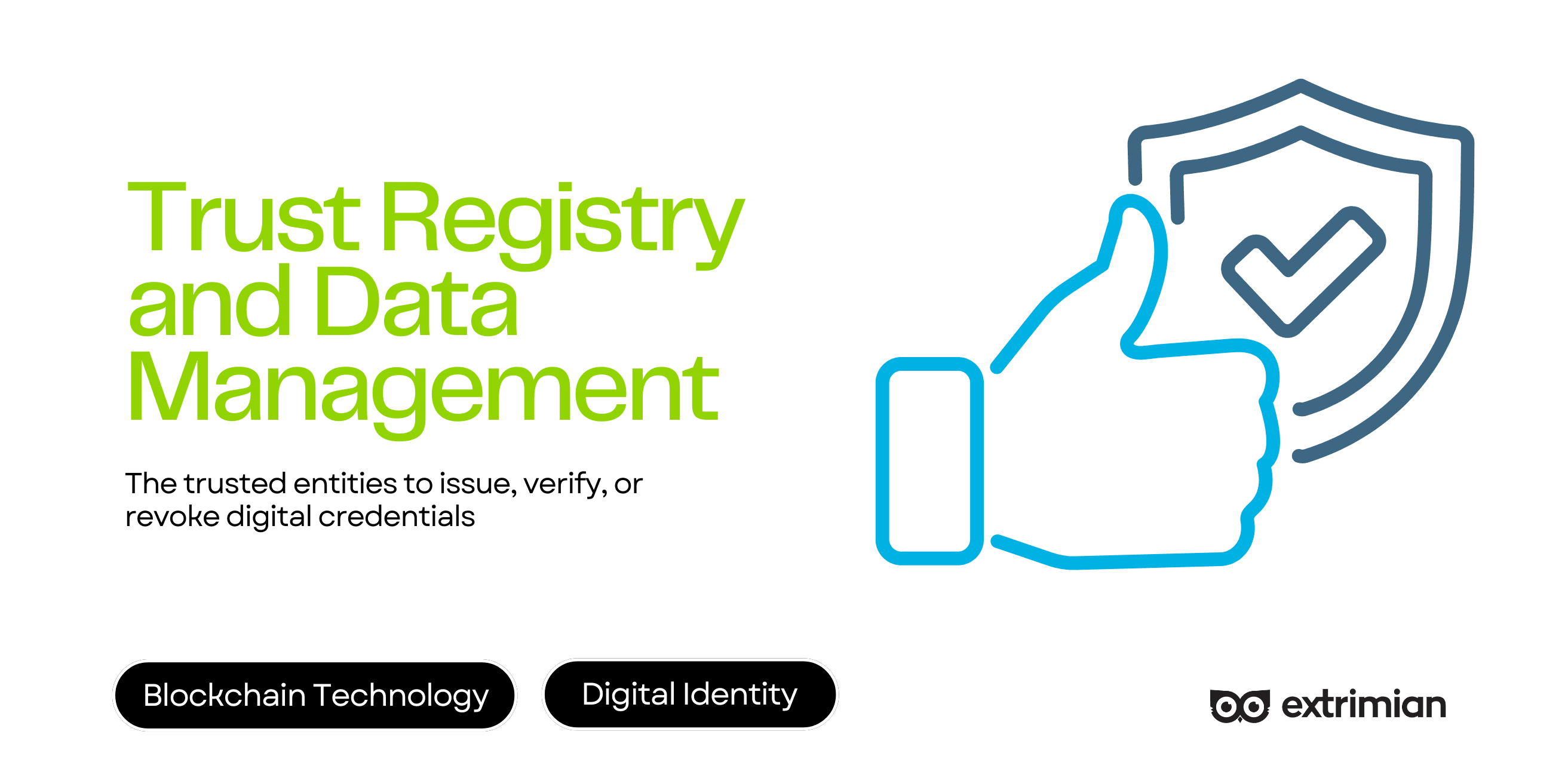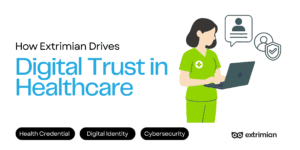Overview
A Trust Registry is a critical component in decentralized identity ecosystems (SSI), acting as an authoritative, decentralized source that defines who are trusted entities to issue, verify, or revoke digital credentials. At Extrimian, Trust Registries are the foundation for enabling secure, transparent, and intermediary-free transactions in decentralized networks.


Why Are Trust Registries Critical?
In a decentralized world, trust cannot rely on a single entity (e.g., a government or bank). Trust Registries enable:
- 🛡️ Decentralized Validation: Verify the authenticity of issuers (e.g., universities, businesses) without intermediaries.
- 🔗 Interoperability: Operate across multiple blockchains and standards (W3C Verifiable Credentials, DID, etc.).
- 🌐 Auditable Transparency: Any participant can inspect trust rules, but changes require consensus.
Practical Example:
A hospital issues verifiable medical credentials. A Trust Registry confirms the hospital is authorized to issue them. When a patient shares their credential with an employer, the employer checks the Trust Registry to validate the hospital’s legitimacy—all in seconds, without human intervention.
Key Components of a Trust Registry (by Extrimian)
- Authorized Issuers:
- List of trusted entities (e.g., governments, educational institutions) whose credentials are accepted in the ecosystem.
- Extrimian Example: Integration with DIDs (Decentralized Identifiers) for globally unique issuer authentication.
- Credential Schemas:
- Define the format and required data for each credential type (e.g., university degree, driver’s license).
- Example: An employment credential schema might include
name,role, andstart_date.
- Governance Mechanisms:
- Decentralized rules to add/remove issuers or update schemas (e.g., stakeholder voting, smart contracts).
- Use Case: A new university applies to join an educational Trust Registry; members validate its legitimacy via a DAO.
- Public Access & Permissions:
- Open APIs to query the registry, with permission layers for editors (e.g., only entities with “admin” credentials).
Trust Registry vs. Traditional Systems
| Aspect | Trust Registry (Extrimian) | Centralized Systems |
|---|---|---|
| Authority | Decentralized (multiple actors) | Single entity (e.g., government) |
| Transparency | Public & auditable | Opaque |
| Censorship Resistance | Yes (consensus-based) | No |
| Interoperability | Multi-blockchain, open standards | Limited to proprietary systems |
Real-World Use Cases
- Decentralized Finance (DeFi):
- A Trust Registry validates that a DeFi protocol complies with KYC/AML regulations before integration with an exchange.
- Global Education:
- Universities across 10 countries are registered to issue internationally recognized academic credentials.
- Digital Health:
- Only accredited hospitals can issue vaccination certificates, preventing fraud.
Integration with Extrimian Technology
Extrimian’s Trust Registries are built on:
- SSI Framework: Compatibility with W3C standards (Verifiable Credentials, DIDs).
- Blockchain-Agnostic: Operates on Ethereum, Polygon, and low-latency networks like Flow.
- ZK-Proofs: Verify Trust Registry membership without exposing sensitive data.
For Developers:typescript // Example: Querying a Trust Registry (Extrimian API) const issuerDid = "did:extrimian:issuer123"; const isTrusted = await TrustRegistry.checkIssuer(issuerDid); if (isTrusted) { // Accept credential }
Frequently Asked Questions (FAQ)
1. Is a Trust Registry the same as a blockchain?
No. It’s a logical layer that may use blockchains to store trust rules but isn’t chain-dependent.
2. How does it prevent corruption?
Decentralized governance (e.g., DAOs) and cryptographic mechanisms ensure changes require consensus.
3. Can I create my own Trust Registry with Extrimian?
Yes. Our framework lets you configure public or private registries in minutes. View documentation.







